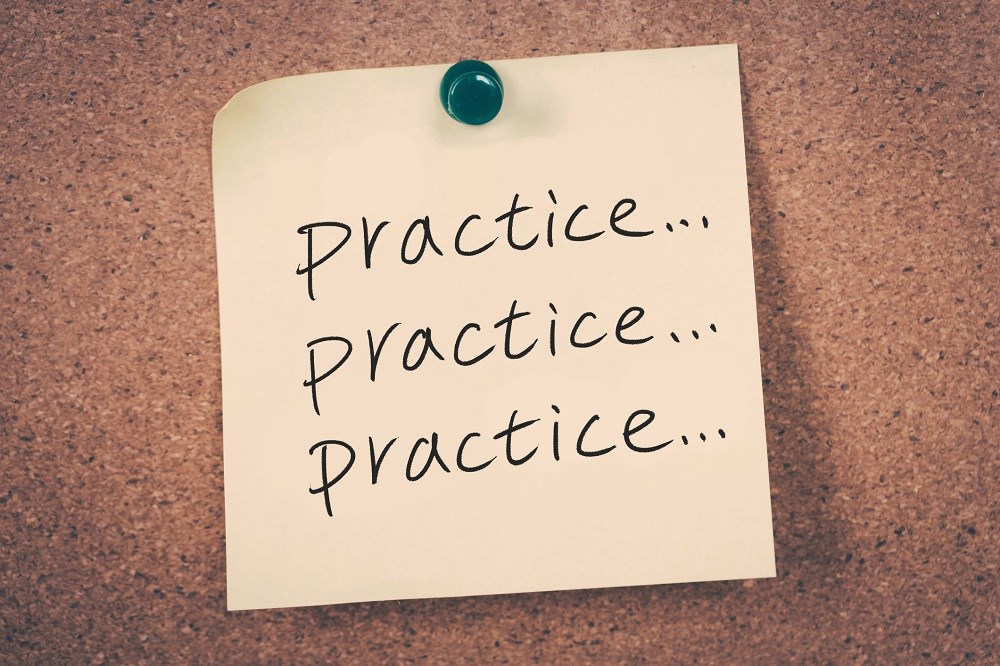Practice makes perfect? The case of interleaving
In our ‘new normal’ (as a result of Covid-19), to say that education has been disrupted is an understatement. Many schools around the world are treating the curriculum as something fixed and, unfortunately, teachers are having to gloss over content simply to ‘cover everything’. In many contexts content, instead of wellbeing, is winning and students are being tested as if there was no pandemic. Although many of us dislike this idea, policies, procedures and external forces prevent us from doing much other than trying to teach in the best way we can. I really wish I had the solution to this conundrum, but instead, I can only offer a suggestion grounded in the Learning Sciences to help students practice and remember content in an attempt to ease the burden on both students and teachers.

When I was in the third grade, it had become crystal clear for my mother and me that Mathematics was definitely not my forte. I remember clearly the first Maths test after the winter holidays and how I cried in front of the teacher (Mrs Yeats). I told her that I had studied divisions all afternoon long for the past three days. She smiled and said, “We have been studying a lot of things, I am sure there is something that was a bit easier for you. Why don’t you study a little bit of something that was easier and then move on to something else, and then to another something? Don’t study the same thing for too long – It’s not good.” That was 30 years ago, so I am not sure Mrs Yeats knew that what she was telling my eight-year-old self is called interleaving. Either way, I have been using it myself since then and, as an EAP and IELTS teacher, I have also been telling my students about interleaving.
What is interleaving?
According to the Cambridge Dictionary, interleaving is ‘to combine different things so that parts of one thing are put between parts of another thing’. For Weinstein et al. (2018), ‘interleaving occurs when different ideas or problem types are tackled in a sequence, as opposed to the more common method of attempting multiple versions of the same problem in a given study session known as blocking or block(ed) practice’.

Block(ed) practice is when a student performs a single skill over and over with repetition being the key, and variance in training is minimized or non-existent (yes, there are many coursebooks and grammar books like this!). One of the limitations of block practice is that it essentially promotes the training of the application of a specific answer or strategy for solving a task as, for example, when doing exercises of the same verb tense to the point that reading the question is unnecessary. Once the resolution strategy is previously defined or is easily identifiable, this application training favours the mechanization of the response, but possibly also weakens the understanding of the topic being studied.
In contrast, interleaving practice, by diversifying the content, requires students to identify and select a resolution strategy (or response) before proceeding to the application. So, interleaving mobilises skills such as content comparison, the identification of standards, the anticipation of results and the decision on the strategy to be applied, favouring not only the application of knowledge, but also the ability to induce reasoning. And if you are wondering if interleaving is more difficult than blocked practice, the answer is yes! It is precisely the difficulty that makes the content ‘stick’ and not go away. To understand how to incorporate interleaving into your teaching whilst understanding some of its benefits, Interleaving: Mixing It Up Boosts Learning is a short video worth watching.
If you work with Content and Language Integrated Learning (CLIL), interleaving can certainly be used in your classes as many studies focused on interleaving are in the fields of mathematics and biology. For those teaching young and very young learners, there are a few studies on gross and fine motor skills as well that corroborate the success of interleaving. There are also studies in the Arts showing student improvement in the identification of artistic styles. In other words, interleaving can definitely be used in the language classroom, but also in all knowledge domains.
If you like reading academic research (like me), you might find this recent Journal of Educational Psychology’s article about interleaving in foreign language teaching (Spanish) particularly interesting. The authors concluded that interleaving ‘improved learning when used to practice conjugating verbs across multiple training sessions’(Pan et al., 2019). Certainly, interleaving is not the holy grail, but, instead, an important resource to be added to our teacher toolbox!

Tools for interleaving
Interleaving can be done with pen and paper, or a whiteboard. But many of us are still teaching live online, so we have to use digital tools instead. Here is a short list of the tools I use the most to practise interleaving:
- Quizlet – a flashcard tool
- Cram – a flashcard tool
- Kahoot – a gameshow-like application
- Gimkit – a gameshow-like application
- Quizziz – a gameshow-like application
If you’d like to know the differences between each of these applications, I recommend reading this review on The Best Quiz and Game Show Apps for Classrooms. Derek Wong shares his experience of using a game-show app in this article Gimkit: a quiz app that is an alternative to Kahoot!

Interleaving as homework
If assigning interleaving practice as homework, make sure to:
- demonstrate interleaving with concrete examples, such as:
Day 1 = Present Perfect ➔ (B) Past Simple ➔ (C) Present Simple,
Day 2 = (B) ➔ (C) ➔ (A),
Day 3 = (C) ➔ (A) ➔ (B); - discourage long vocabulary lists;
- provide students with a tutorial video (or create yours!) so students can watch it as many times as they need to understand how to use the tool;
- determine the time to do interleaving practice. It is a good idea to have time to start and time to end beforehand;
- choose the subjects/areas to study each day. Try to vary the topics so there is actual 'interleaving';
- interleave each subject/area/topic and determine a number of hours to study each one. Ideally, it should not be more than 1–2 hours of study;
- establish time to take breaks between each hour of study. They should be short breaks to change the subject/area/topic;
- gather student feedback on their interweaving homework and apply to the next cycle.

What do you think about interleaving? Have you been using it without knowing the name? Would you like to give it a try? Please share your thoughts in the comments below.
References
Higgin, T. (2020). The Best Quiz and Game Show Apps for Classrooms. Common Sense Education
Pan, S. (2018). Interleaving: Mixing It Up Boosts Learning. Psyc YouTube, UC San Diego Department of Psychology
Pan, S. C., Tajran, J., Lovelett, J., Osuna, J., & Rickard, T. C. (2019). ‘Does interleaved practice enhance foreign language learning? The effects of training schedule on Spanish verb conjugation skills’. Journal of Educational Psychology, 111(7), 1172.
Weinstein, Y., Madan, C. R., & Sumeracki, M. A. (2018). ‘Teaching the science of learning’. Cognitive Research: Principles and Implications, 3(1), 2.
Wong, D. (2019). ‘Gimkit: a quiz app that is an alternative to Kahoot!’ English Teaching professional 124.

Comments
Write a Comment
Comment Submitted